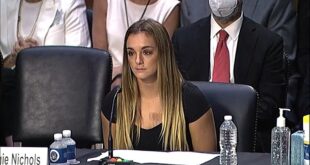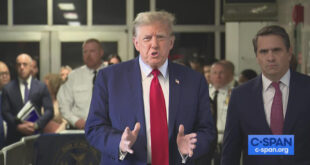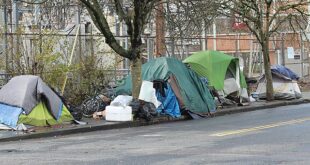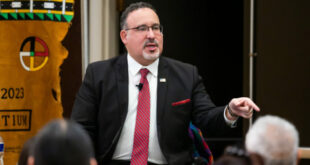Casey Quinlan
After the largest U.S. bank failure in more than a decade, regional bank stocks plunged on Monday as the federal government — with the 2007-2008 financial crisis still a fresh memory for many — rushed to reassure Americans that the U.S. banking system was stable.
President Joe Biden told Americans that the risks taken on by failed banks will not be a burden on taxpayers, that management will be fired and held accountable, and that depositors’ money will be safe up to $250,000 — but not investors’ funds.
Biden and Sens. Elizabeth Warren (D-MA.) and Bernie Sanders (I-VT.) blamed the bank failures in part on the 2018 law signed by President Donald Trump that rolled back regulations for smaller and medium-sized banks that had been put in place under the 2010 Dodd–Frank Wall Street Reform and Consumer Protection Act.
Those rules were put in place after the 2008 financial crisis that saw the failure of investment banks Lehman Brothers and Bear Stearns and Washington Mutual Bank, the first of more than 300 banks to close from 2008-2010.
The new crisis started last week when Silicon Valley Bank, the 16th largest bank in the U.S. and a key financial institution for the tech sector, collapsed on Friday after a run on the bank. Federal banking regulators took over the bank and, on Sunday, New York regulators closed Signature Bank, which served cryptocurrency clients. Treasury Secretary Janet Yellen announced that the FDIC would cover depositors for both banks.
Ted Rossman, senior industry analyst at Bankrate.com, said there is a big difference between the collapse of Silicon Valley Bank and Signature Bank and what happened in 2008.
“I think a big distinction is what caused this issue because back then it was much more exotic, like derivatives and credit default swaps, and exotic mortgages,” he explained. “Silicon Valley Bank was more of a true bank run where a lot of depositors wanted their money all at once. And why did they want their money all at once? There were rumors spreading that the bank was in trouble and the bank was in trouble because of higher rates and mismanagement of their risk because all these underlying bonds had lost a lot of money because of higher rates and, rates rise and prices fall.”
Aaron Klein, senior fellow in economic studies at the Brookings Institution, agreed that the leeway Silicon Valley Bank was given led to its troubles. He told States Newsroom in an email statement that he hopes that Congress pays attention to what he calls the “highly problematic structure” of regional Fed banks.
“SVB was allowed by the Federal Reserve, their primary regulator, to build up a massive position on mortgage-backed securities with little to no hedging for interest rates,” he wrote. “At the same time, SVB relied on uninsured bank deposits at a mammoth level far out of line with other banks. SVB is not a Main Street bank and never was. Most banks of that size ($200B) have 1,000 branches. SVB had 16. SVB’s assets quadrupled in 4 years with explosive growth that ought to raise flags,” he wrote.
Rossman said there may be more bank failures or rumors of bank failures, but that doesn’t mean that the average consumer will be affected right now.
“We see today a lot of community or regional mid-sized banks are under some pressure. It does seem that there’s more pain to come here in some corners, a lot of it tracking back to higher interest rates and some of the unintended consequences there, but from a depositor perspective, I wouldn’t worry about losing money, especially within that $250,000 threshold,” he said.
The Federal Deposit Insurance Corporation insures bank deposits up to $250,000.
“The FDIC is funded by member dues, so basically the banks pay into the system, and that’s the fund that’s being used to make depositors whole at Silicon Valley Bank and Signature Bank,” Rossman added. “And if the fund were to run out, the FDIC could impose additional fees on banks.”
One result of the banks’ collapse could be a little loosening of the Federal Reserve’s position on interest rate increases.
“The odds of a 50-basis-point hike from the Fed at its next meeting have pretty much come off the table, said Rossman, senior industry analyst at Bankrate.com. “ … Now, it seems like a quarter point is most likely, although there’s actually a decent chance that there may not be a hike at all at the next meeting next week.”
Goldman Sachs economists said on Sunday that they don’t expect any rate hike when the Fed meets, which was a change from their prediction of a 25-basis-point hike before the bank failures.
Sheila Bair, former chair of the FDIC when Washington Mutual collapsed, said that if the Fed chose to pause its interest rate hikes, the decision would have a “settling effect” on the markets.
 Poli Alert Political & Civics
Poli Alert Political & Civics



